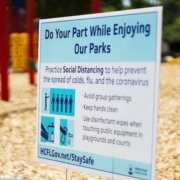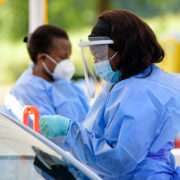Health Communication and COVID-19

COVID-19 poses all-encompassing challenges for the Centers for Disease Control and Prevention (CDC), who must respond directly to the pandemic while simultaneously maintaining support for ongoing public health threats. The pandemic reaches into every disease area, requiring staff agency-wide to adjust current activities – and for many to deploy directly to the response. These response activities impact health communicators, who must adapt messages to address challenges and risks around COVID 19.
Effective communication is crucial during public health emergencies, such as COVID-19. Communities, organizations, and individuals need to know how to prepare and respond during a pandemic. To develop and deliver effective communications during critical times, health agencies, political leaders, public health experts, and aid organizations can apply the CDC’s Crisis & Emergency Risk Communication (CERC) Model: Be First. Be Right. Be Credible.
Having previously supported CDC in crisis communications through the 2015 Ebola outbreak and 2015 HIV outbreak in Indiana, DLH continued to support CDC’s health communications during the COVID-19 response. Utilizing new communications platforms and technologies to respond to developments quickly and to disseminate messages broadly, DLH developed messages based on the latest science to support partners on-the-ground, and assisted with the creation of emergency communications content for the general public and specific populations.
- CDC National Prevention Information Network (NPIN) is a digital resource for health professionals that offers the latest news, resources, and tools related to HIV, viral hepatitis, STD, and TB prevention, and adolescent school health through a variety of communication channels. DLH health communication experts support the dissemination of COVID-19 updates, resources, and events to prevention partners nationwide through social media and innovative digital content, including a recent webinar on STDs and clinical guidance during COVID-19.
- During the pandemic. DLH continued to support critical digital assets in the National Center for HIV/AIDS, Viral Hepatitis, STD, and Tuberculosis Prevention (NCHHSTP). DLH led the launch of a new internal site for CDC’s Core Priorities Working Group. The group is charged with determining the top public health priorities during the pandemic and identifying programmatic risks, challenges, and vulnerabilities across the agency for restarting public health activities. After the initial launch, DLH continues to support the group by quickly implementing updates and resources.
- Clear communication from public health leaders is essential in moments of public health crisis. DLH strategists developed, implemented, and evaluated the COVID-19 communications and social media strategy for NCHHSTP leadership. After implementing the strategy, engagement and reach increased both internally and externally.
The COVID-19 pandemic has strained many sectors of healthcare and public health, but the struggle has underscored the strength of partnerships and the value of crucial health communication. DLH remains a steadfast partner with the CDC and the Department of Health and Human Services to support the strategy, development, and dissemination of health information to protect the nation from health threats.









Leave a Reply
Want to join the discussion?Feel free to contribute!